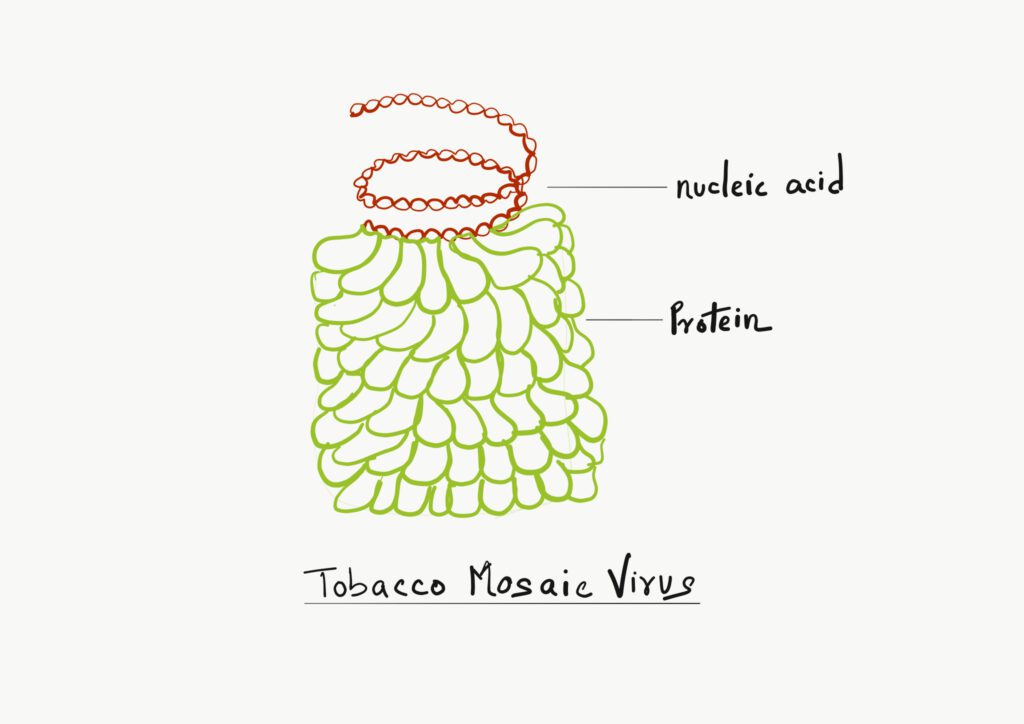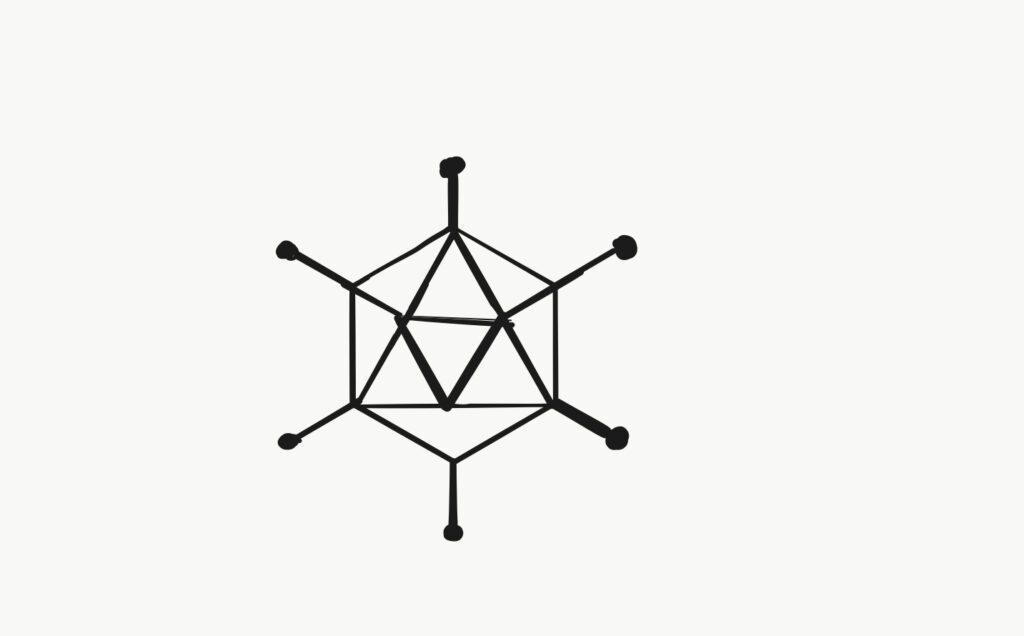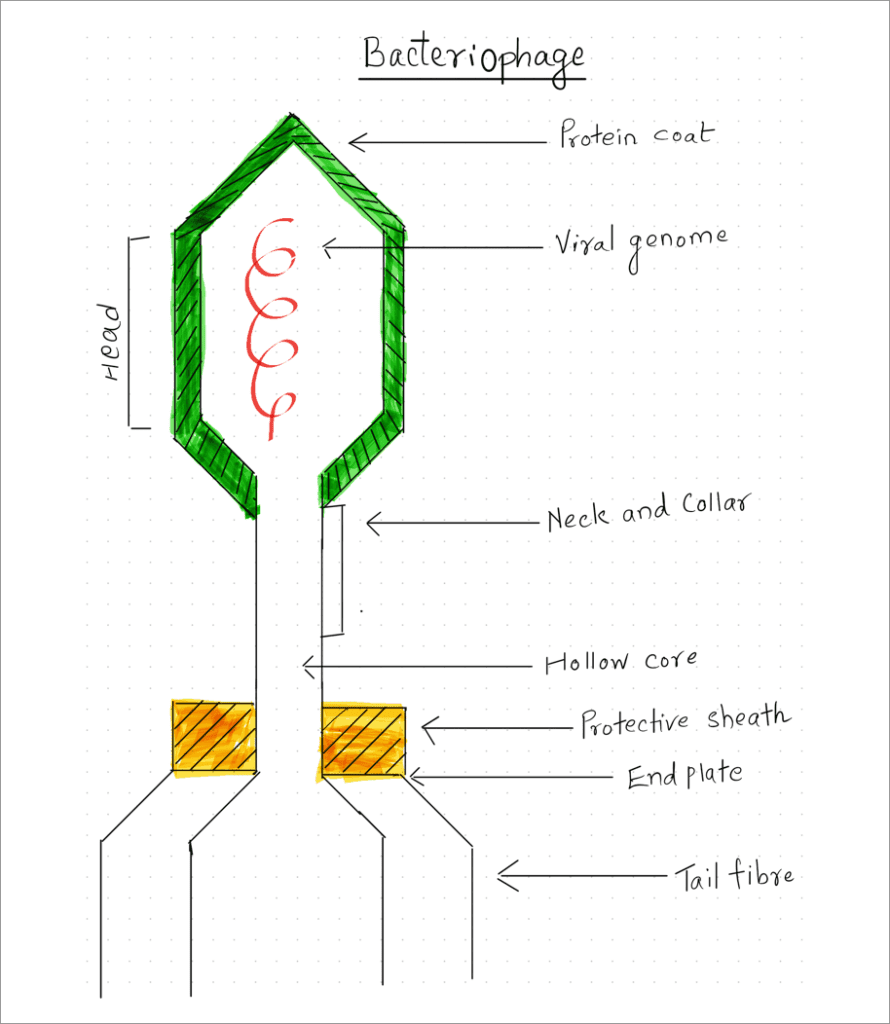Virus definition
In Latin, the word virus means poisonous or venomous fluid coined by Dmitri Ivanowsky (1892). He recognized certain microbes causing mosaic diseases of tobacco are smaller than that of bacteria. These are very very minute submicroscopic biological entities. Thus, definition for viruses is that it does not have any cellular organelles but definitely has its own genetic material. For their multiplication, it needs a host cell like bacteria, plants, or animals.
The size of the virus varies between 30 to 300 nm depending upon the type of virus. They have a specific geometric shape and are filled with infected virus particles known as Virion.
The definition for viruses are “small obligate intracellular parasites, which by definition contain either a RNA or DNA genome surrounded by a protective, virus-coded protein coat. Viruses may be viewed as mobile genetic elements, most probably of cellular origin and characterized by a long co-evolution of virus and host.” (1).
The general structure of the virus
A virus is mainly divided into three parts
- A nucleic acid genome
- Protein capsid
- Lipid envelop in case of animal viruses
A. Nucleic acid genome
Either single or double-stranded RNA or DNA is the main genomic component of a virus. The genetic material is infectious in nature. The viruses which affect or infect the plants generally have single-stranded RNA. And the viruses which infect animals have either single or double-stranded RNA or DNA. Bacterial viruses have double-stranded DNA. The size of the genome varies from 5-10 kb to 100-200 kb.
Depending upon the nucleic acids present in the viruses they are further classified into DNA virus and RNA virus.
B. Protein capsid
The capsid is a protective coat of protein that wrapped or covers the nucleic acid genome. Capsomeres are the main building blocks for the capsid. Which further have few monomers or structural units.
Prism, hexagonal, pentagonal, etc. are the different shapes of capsomere. Capsids viruses are further divided into the following three broad categories depending on the shape of the capsomere
- Helical symmetry capsid
- Icosahedral symmetry capsid
- Complex symmetry capsid
1. Helical symmetry capsid

Many rod-shaped or filamentous viruses have capsids with helical symmetry. Examples are tobacco mosaic viruses, influenza viruses, and bacteriophage M13.
2. Icosahedral symmetry capsid

Icosahedral means 20 sides, therefore, many viruses have a spherical, cubical, or polygonal shape. Examples of icosahedral symmetry viruses are Turnip yellow mosaic virus which has 32 capsomeres, polioviruses with 32 capsomeres, polyoma, and papillomavirus both having 72 capsomeres.
3. Complex symmetry capsid

As the name suggests the viruses with complex shapes because of the too large genome to be packed inside a simply shaped capsid. Examples are poxviruses, T2 phage viruses, rabies viruses, etc.
Some of the frequently asked questions
Name some common viruses.
Common cold viruses, influenza viruses, and bronchitis viruses, mumps viruses infect Humans.
Some plant viruses are tobacco mosaic viruses and other types of mosaic viruses cause leaf rolling, curling, yellowing, and vein clearing, dwarfing, and stunted growth of the plants.
Can a virus be killed?
The simple medication of an antibiotic can not kill a virus there are some antiviral drugs also for certain types of viral infection. If a viral infection occurs then it will take time to cure until the body develops its immunity against it. One of the best ways to prevent the virus is vaccination.
How long does a virus last?
Depending upon the body’s immunity and the type of virus it may last from 2 days to 2 to 3 weeks.
